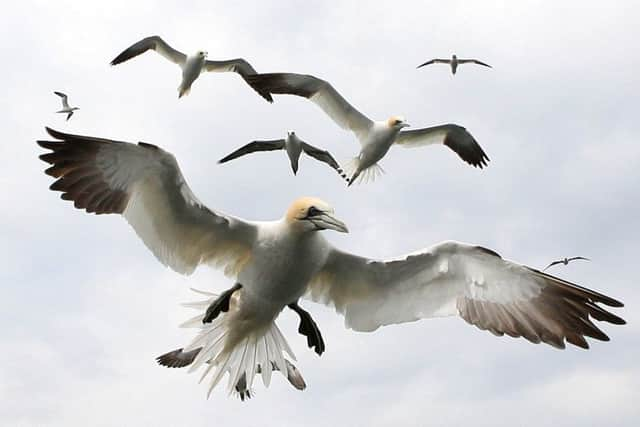State-of-the-art radar cameras installed to study seabirds off Scottish coast


State-of-the-art radar technology is being used to track seabirds off the east coast of Scotland in a bid to understand how they interact with offshore wind turbines.
The system has been installed at the pioneering European Offshore Wind Deployment Centre (EOWDC) in Aberdeen Bay, which was at the centre of a legal battle with Donald Trump.
Advertisement
Hide AdAdvertisement
Hide AdIt will monitor the flight patterns and responses of gannets, kittiwakes and large gulls during their summer breeding season as they fly around the 11-turbine scheme.
The technology includes a radar, which can detect birds up to 3km from the wind farm, and two cameras that lock on and record their flight paths and movements around the site.
One of the cameras is thermal and so can pinpoint any night-time activities.
The study is believed to be the first of its kind in the world and is part of a £2.7m scientific research and monitoring programme run by the EOWDC.
The initiative is supported by a panel of experts which includes RSPB Scotland, the Joint Nature Conservation Committee, Marine Scotland Science and Scottish Natural Heritage.
Data collected will include three-dimensional radar tracks as well as video footage of birds moving through the development. It will allow identification of specific species, showing flight height as well as individual and group behaviour. The findings will reveal whether and how often birds might be colliding with the giant structures or if they are being displaced from important feeding grounds.
Chris Jackson, senior environmental specialist at Vattenfall, which owns the EOWDC, says the system will be tested out over the next few months before the new breeding season begins next year.
“There is a huge unknown over how birds interact with offshore turbines,” he said.
Advertisement
Hide AdAdvertisement
Hide Ad“With this research we’re looking to increase confidence and reduce uncertainty when we are assessing the impact of offshore wind farms.”
The latest study is the fifth in the research programme to date. The Vattenfall team is hoping to undertake a new project involving the creation of artificial reefs around turbine foundations to help restore seabed habitat. The EOWDC currently has the world’s most powerful offshore turbines, with a rotor diameter of 164m and a generating capacity that has been boosted to 8.8 megawatts.
The development employs a number of cutting-edge innovations designed to increase efficiency and cut risks for maintenance crews. These include an onsite thunderstorm detection system, driverless submarines that carry out underwater inspections and pre-programmed drones that fly themselves out to the turbines to check for defects. The building of the scheme came under threat after Donald Trump objected to its position off the Aberdeenshire coast, claiming it would spoil the view from his golf resort at Balmedie and “kill all the birds”.
His legal bid to halt construction failed, and the wind farm powered up last summer.